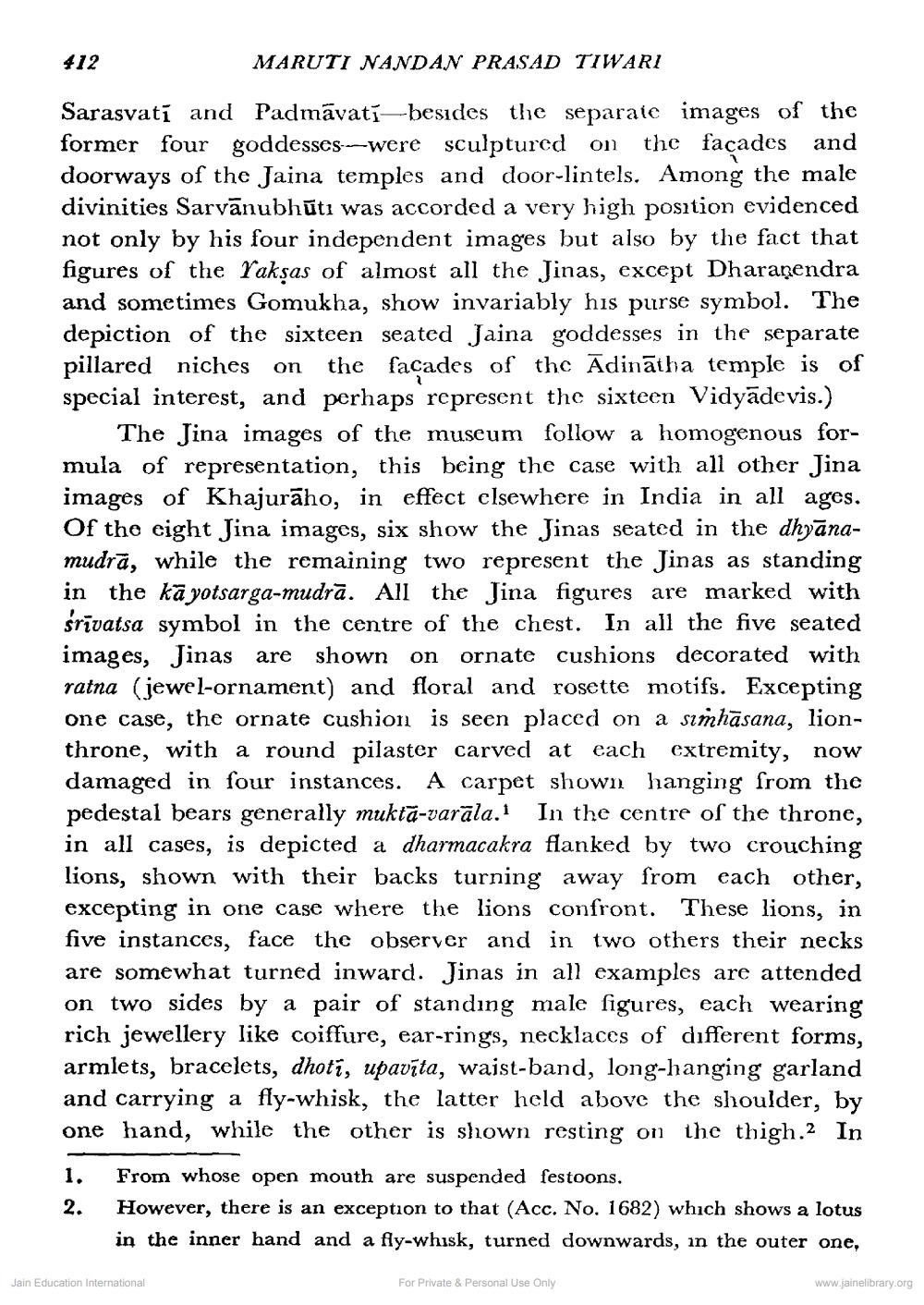________________
412
MARUTI NANDAN PRASAD TIWARI
Sarasvati and Padmavati-besides the separate images of the former four goddesses-were sculptured on the façades and doorways of the Jaina temples and door-lintels. Among the male divinities Sarvānubhūti was accorded a very high position evidenced not only by his four independent images but also by the fact that figures of the Yakṣas of almost all the Jinas, except Dharaṇendra and sometimes Gomukha, show invariably his purse symbol. The depiction of the sixteen seated Jaina goddesses in the separate pillared niches on the facades of the Adinatha temple is of special interest, and perhaps represent the sixteen Vidyadevis.)
The Jina images of the museum follow a homogenous formula of representation, this being the case with all other Jina images of Khajurāho, in effect elsewhere in India in all ages. Of the eight Jina images, six show the Jinas seated in the dhyānamudra, while the remaining two represent the Jinas as standing in the kayotsarga-mudra. All the Jina figures are marked with śrivatsa symbol in the centre of the chest. In all the five seated images, Jinas are shown on ornate cushions decorated with ratna (jewel-ornament) and floral and rosette motifs. Excepting one case, the ornate cushion is seen placed on a simhasana, lionthrone, with a round pilaster carved at each extremity, now damaged in four instances. A carpet shown hanging from the pedestal bears generally muktā-varāla.1 In the centre of the throne, in all cases, is depicted a dharmacakra flanked by two crouching lions, shown with their backs turning away from each other, excepting in one case where the lions confront. These lions, in five instances, face the observer and in two others their necks are somewhat turned inward. Jinas in all examples are attended on two sides by a pair of standing male figures, each wearing rich jewellery like coiffure, ear-rings, necklaces of different forms, armlets, bracelets, dhoti, upavita, waist-band, long-hanging garland and carrying a fly-whisk, the latter held above the shoulder, by one hand, while the other is shown resting on the thigh.2 In
1. From whose open mouth are suspended festoons.
2.
However, there is an exception to that (Acc. No. 1682) which shows a lotus in the inner hand and a fly-whisk, turned downwards, in the outer one,
Jain Education International
For Private & Personal Use Only
www.jainelibrary.org




